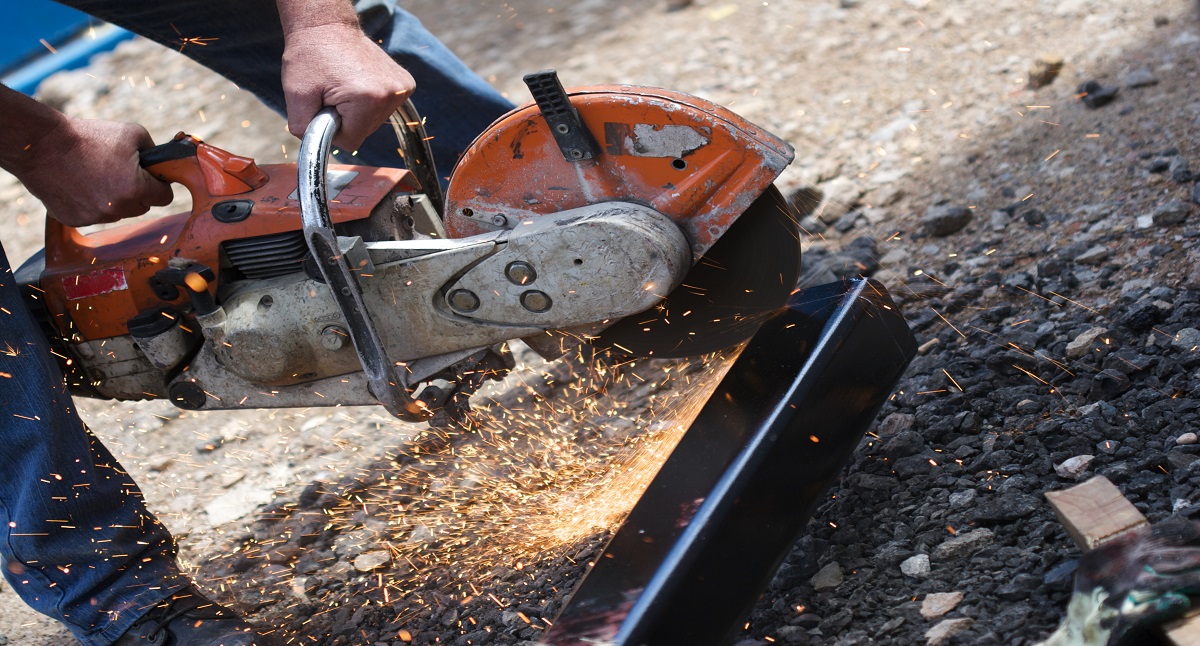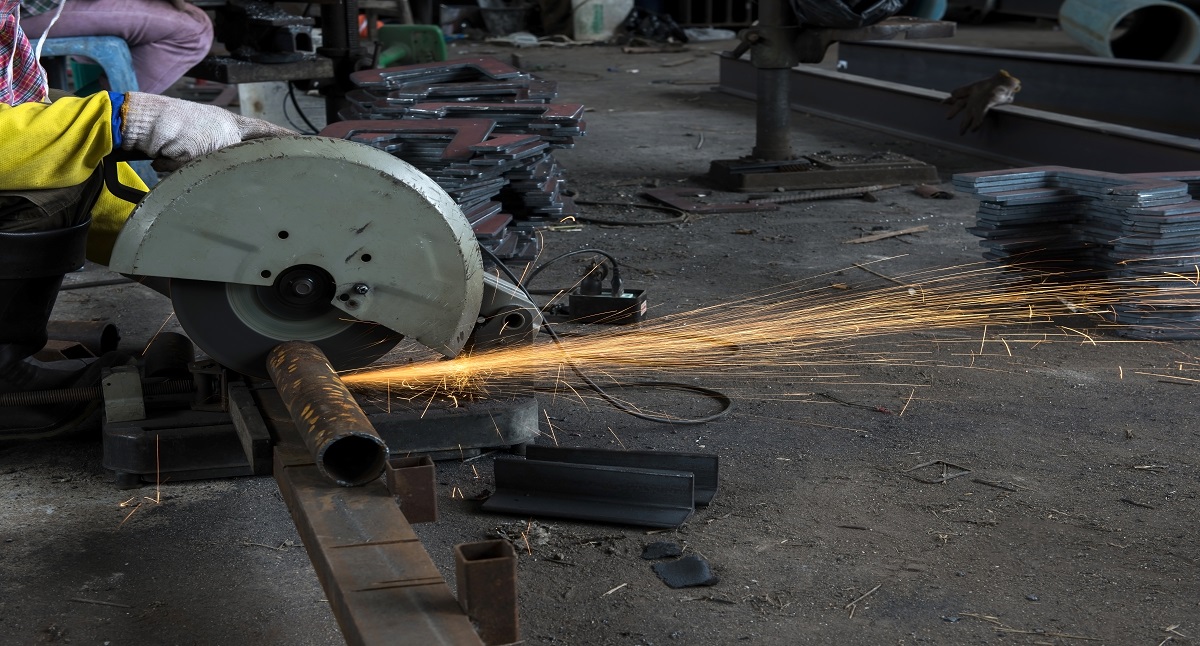Metal cutting is a fundamental process in industries such as construction, automotive, manufacturing, and even DIY projects. Choosing the right cutting technique depends on various factors, including the type of metal, thickness, desired precision, cost, and the available tools. This article will explore several common metal-cutting techniques and help you decide which method is best suited for your needs.
1. Manual Cutting Tools: Hacksaws and Snips
Hacksaws
Hacksaws are the most straightforward tools for cutting metal. They consist of a handle and a thin, fine-toothed blade. While hacksaws are suitable for cutting thin sheets of metal, metal rods, and pipes, they are not ideal for precision work or cutting thick metals. This method is inexpensive and requires little setup, making it perfect for small-scale or DIY tasks.
Advantages:
- Inexpensive and widely available.
- Simple to use with no power requirements.
- Ideal for small, simple cuts.
Disadvantages:
- Slow and labor-intensive for large projects.
- Not suitable for thick or hardened metals.
- Limited precision.
Snips
Snips, also known as aviation snips or tin snips, are hand tools designed to cut through thin sheets of metal like aluminum or steel. They come in various forms: straight, left-cutting, and right-cutting snips, each used for different cutting directions. Snips are an excellent choice for cutting metal sheets but are not practical for thicker or stronger materials.
Advantages:
- Affordable and accessible.
- Suitable for sheet metal.
- Easy to handle for small, manual jobs.
Disadvantages:
- Limited to thin metals.
- Requires significant manual effort.
- May produce rough edges.
2. Abrasive Cutting: Angle Grinders and Cut-off Wheels
Angle Grinders
Angle grinders are versatile power tools used for cutting, grinding, and polishing metal. Equipped with a high-speed rotating abrasive disc, angle grinders are highly effective for cutting through a variety of metals, from steel to aluminum. However, safety is a primary concern as sparks and flying debris are common when using these tools.
Advantages:
- Highly versatile and portable.
- Effective for cutting thick and thin metals.
- Inexpensive and widely used in various industries.
Disadvantages:
- Requires experience for safe operation.
- Produces sparks and heat, which can cause warping or burns.
- Not ideal for precision cutting.
Cut-off Wheels
Abrasive cut-off wheels, often used with a chop saw or cut-off saw, are designed for straight and precise cuts. These wheels are composed of materials such as aluminum oxide or silicon carbide and can cut through a range of metals, including steel and cast iron. Abrasive cutting is fast and efficient, making it ideal for industrial applications.
Advantages:
- Quick and effective for cutting through tough materials.
- Provides relatively clean cuts.
- Suitable for repetitive industrial processes.
Disadvantages:
- Generates a lot of heat and sparks.
- Limited to straight cuts.
- Wheels wear down over time and need replacement.
3. Sawing Methods: Band Saws and Circular Saws
Band Saws
Band saws are stationary tools that use a continuous, flexible saw blade to cut through metal. They are ideal for cutting thick metals, large pieces, or irregular shapes. Band saws can be configured for vertical or horizontal operation, with vertical band saws being used for freehand cutting and horizontal band saws for precise, straight cuts.
Advantages:
- Capable of cutting thick or hardened metals.
- Offers both straight and curved cuts.
- Minimal heat generation, reducing the risk of material distortion.
Disadvantages:
- Higher upfront cost and maintenance.
- Requires significant workspace.
- Limited portability.
Circular Saws
A metal-cutting circular saw is equipped with a specialized blade designed to slice through metal. These saws are portable, making them suitable for both workshop and job site use. Circular saws offer precise, clean cuts and are faster than band saws for cutting metal sheets, pipes, and rods.
Advantages:
- Fast and efficient for straight cuts.
- Portable and easy to use.
- Produces clean, burr-free cuts.
Disadvantages:
- Not suitable for thick metals or intricate shapes.
- Limited to straight cuts.
- Blade life may be reduced when cutting hardened metals.
4. Thermal Cutting Techniques: Plasma Cutting and Oxy-Fuel Cutting
Plasma Cutting
Plasma cutting is a high-speed method that uses a plasma torch to cut through electrically conductive metals, including steel, aluminum, and copper. Plasma cutters use an electric arc to ionize gas and create plasma, which melts the metal at the point of contact. Plasma cutting is extremely fast and efficient, making it ideal for cutting thick metals with precision.
Advantages:
- Fast and efficient for thick metals.
- Can cut complex shapes with high precision.
- Minimal heat distortion compared to oxy-fuel cutting.
Disadvantages:
- Expensive initial investment.
- Requires a power source and air compressor.
- Best suited for conductive metals only.
Oxy-Fuel Cutting
Oxy-fuel cutting, also known as oxy-acetylene cutting, uses a flame fueled by oxygen and acetylene gas to cut through metal. It is primarily used for cutting mild steel and is ideal for large, industrial applications. This method is best for thick metal plates but is less precise compared to other cutting techniques.
Advantages:
- Effective for cutting very thick metals (over 6 inches).
- Portable for use in different work environments.
- Suitable for heavy industrial work.
Disadvantages:
- Not precise for thin metals or intricate shapes.
- Generates high heat, which can warp or damage the material.
- Limited to steel and other ferrous metals.
5. Precision Cutting: Waterjet and Laser Cutting
Waterjet Cutting
Waterjet cutting uses a high-pressure stream of water mixed with an abrasive material (such as garnet) to cut through metals. This method is highly precise and generates no heat, making it ideal for cutting heat-sensitive materials and maintaining structural integrity. Waterjet cutting can handle a wide range of metals, including steel, titanium, and aluminum.
Advantages:
- Highly precise and suitable for intricate shapes.
- No heat generation, preventing warping.
- Capable of cutting thick and thin metals alike.
Disadvantages:
- Expensive equipment and operation costs.
- Slower than other cutting methods.
- Requires a water source and proper drainage.
Laser Cutting
Laser cutting is a high-precision method that uses a focused beam of light to cut through metals. Laser cutting can handle a variety of materials, including stainless steel, carbon steel, and aluminum, with extreme accuracy. This technique is perfect for cutting thin sheets of metal with intricate designs, such as in automotive and aerospace industries.
Advantages:
- Extremely precise and ideal for complex shapes.
- High cutting speed for thin metals.
- Produces clean edges with minimal post-processing.
Disadvantages:
- Limited to thinner metals (up to 20mm, depending on the laser).
- Expensive initial investment and maintenance.
- Requires trained operators.
6. Choosing the Right Technique for Your Project
When deciding which metal cutting technique is best for your project, consider the following factors:
- Material Type and Thickness: Some methods, such as plasma cutting and oxy-fuel cutting, are more effective for thick metals, while others like snips and hacksaws are only suitable for thin materials.
- Precision Requirements: If your project requires intricate cuts and high precision, consider techniques like laser cutting or waterjet cutting. For simpler, straight cuts, circular saws or cut-off wheels may suffice.
- Budget and Equipment Availability: Manual tools like hacksaws and snips are inexpensive, but they require more effort and time. On the other hand, advanced techniques like laser and waterjet cutting come with higher upfront costs but deliver superior precision and speed.
- Work Environment: If you need portability, tools like angle grinders or portable circular saws are convenient options. Stationary machines like band saws or waterjet cutters are better suited for workshop environments.
- Safety Considerations: Abrasive and thermal cutting methods, such as angle grinders and oxy-fuel cutting, generate heat and sparks, requiring proper safety precautions. Laser and waterjet cutting, while expensive, are safer and produce minimal debris.
Conclusion
Selecting the right metal cutting technique depends on your specific project requirements. For small DIY tasks or occasional cuts, manual tools like hacksaws or snips may be sufficient. If you need to cut thicker metals or require more speed, consider tools like angle grinders or band saws. For intricate designs or high precision, advanced techniques like laser or waterjet cutting will offer the best results. Balancing factors such as cost, precision, material type, and work environment will help you choose the most suitable cutting method for your needs.


